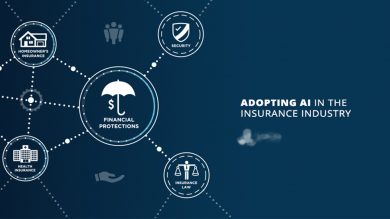The Challenge
The financial and resource disparities between counties, schools, and individual students have exposed the glaring gaps in the education system. The school closings due to coronavirus concerns have turned a spotlight on those problems and how they contribute to educational and income inequality in the nation, the effects of the pandemic on schools and how the experience may inspire an overhaul of the traditional education system
The challenge we have today is to develop new, permanent systems, redesigned to meet the needs which have been so glaringly exposed in this crisis. For example, we have always had large gaps in students’ learning opportunities after school, weekends, and in the school holidays. Disadvantaged students suffer the consequences of those gaps more than affluent children, who typically have lots of opportunities to fill in those gaps.
This crisis requires that we can learn some things about online delivery of not only instruction but an array of opportunities for learning and support. In this way, we can make the most of the crisis to help redesign better systems of education and child development.
In this situation, we don’t simply want to frantically struggle to restore the status quo because the status quo wasn’t operating at an effective level and certainly wasn’t serving all of our children fairly. There are things we can learn in the messiness of adapting through this crisis, which has revealed profound disparities in children’s access to support and opportunities.
We should be asking: How do we make our school, education, and child-development systems more individually responsive to the needs of our students? Why not construct a system that meets children where they are and gives them what they need inside and outside of school in order to be successful? Let’s take this opportunity to end the “one size fits all” factory model of education.
We tend to regard our school systems uniformly, but actually schools are widely different in their operations and impact on children, just as our students themselves are very different from one another. Children come from very different backgrounds and have very different resources, opportunities, and support outside of school. Now that their entire learning lives, as well as their actual physical lives, are outside of school, those differences and disparities come into vivid view. Some students will be fine during this crisis because they’ll have high-quality learning opportunities, whether it’s formal schooling or informal homeschooling of some kind coupled with various enrichment opportunities.
Conversely, other students won’t have access to anything of quality, and as a result, will be at an enormous disadvantage. Generally speaking, the most economically challenged in our society will be the most vulnerable in this crisis, and most advantaged are most likely to survive without losing too much ground.
The digital divide between students has become apparent as schools have increasingly turned to online instruction. What can school systems do to address that gap? Arguably, this is something that schools should have been doing a long time ago, opening up the whole frontier of out-of-school learning by virtue of making sure that all students have access to the technology and the internet they need in order to be connected in out-of-school hours.
Students in certain schools don’t have those resources right now because often the school doesn’t have the budget to do this, but parents, schools, education authorities are starting to see the imperative for coming together to meet this need.
Twenty-first-century learning absolutely requires technology and the internet. We can’t leave this to chance or the accident of birth. All of our children should have the technology they need to learn outside of school. Some communities can take it for granted that their children will have such tools. Others who have been unable to afford to level the playing field are now finding ways to step up
The default in our education system is now homeschooling. Virtually all parents are doing some form of homeschooling, whether they want to or not. And the question is: What resources, support, or capacity do they have to do homeschooling effectively? A lot of parents are struggling with that.
And again, we have the widely variable capacity in our families and school systems. Some families have parents home all day, while other parents have to go to work. Some school systems are doing online classes all day long, and the students are fully engaged and have lots of homework, and the parents don’t need to do much. In other cases, there is virtually nothing going on at the school level, and everything falls to the parents.
In the meantime, lots of organizations are springing up, offering different kinds of resources such as handbooks and curriculum outlines, while many school systems are coming up with guidance documents to help parents create a positive learning environment in their homes by engaging children in challenging activities so they keep learning.
There are lots of creative things that can be done at home. But the challenge, of course, for parents is that they are contending with working from home, and in other cases, having to leave home to do their jobs. We have to be aware that families are facing myriad challenges right now. If we’re not careful, we risk overloading families.
We have to strike a balance between what children need and what families can do, and how you maintain some kind of work-life balance in the home environment. Finally, we must recognize the equity issues in the forced overreliance on homeschooling so that we avoid further disadvantaging the already disadvantaged.
This newfound public awareness of pervasive inequities, I hope, will create a sense of urgency in the public domain. We need to correct these inequities in order for education to realize its ambitious goals. We need to redesign our systems of child development and education. The most obvious place to start for schools is working on equitable access to educational technology as a way to close the digital learning gap.
The best that can come of this is a new paradigm shift in terms of the way in which we look at education because children’s well-being and success depend on more than just schooling. We need to look holistically, at the entirety of children’s lives. In order for children to come to school ready to learn, they need a wide array of essential supports and opportunities outside of school. And we haven’t done a very good job of providing these.
These education prerequisites go far beyond the purview of school systems, but rather are the responsibility of communities and society at large. In order to learn, children need equal access to health care, food, clean water, stable housing, and out-of-school enrichment opportunities, to name just a few preconditions. We have to conceptualize the whole job of child development and education and construct systems that meet children where they are and give them what they need, both inside and outside of school, in order for all of them to have a genuine opportunity to be successful.
Conclusion
Within this coronavirus crisis, there is an opportunity to reshape Kenyan education in a way to meet the demands of a high-skills/high-knowledge economy. Traditional lectures may still exist along with the new-age learning tools and technology, but the lecture materials should be provided as a supplement to classroom activities and moved online for students to reference outside of the classroom.
Classroom time is better used for discussing the curriculum, engaging in activities with teams, and completing class projects. Students often have the option to pace their learning and even study ahead with a digital learning tool if they wish to do so. By helping children think outside their typical learning modes, digital learning inspires creativity and lets children feel a sense of accomplishment that encourages further learning.
Digital learning tools and technology fill the gaps where traditional classroom teaching falls behind. In fact, some of the efficiencies such tools bring are simply unmatchable by traditional learning techniques. From the environmental impact recognized by the need for less paper for handouts and books to saving time with quick access to information and the ease of research, digital learning provides an effective way to cut costs, maximize resources and heighten both reach and impact for students and educators alike




